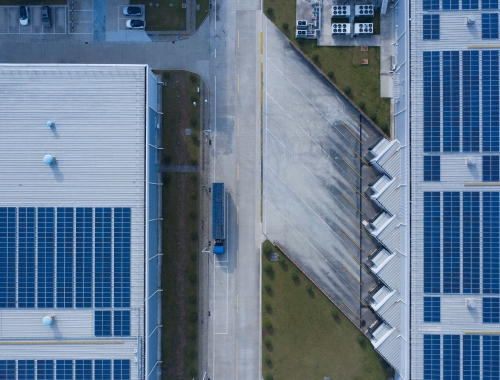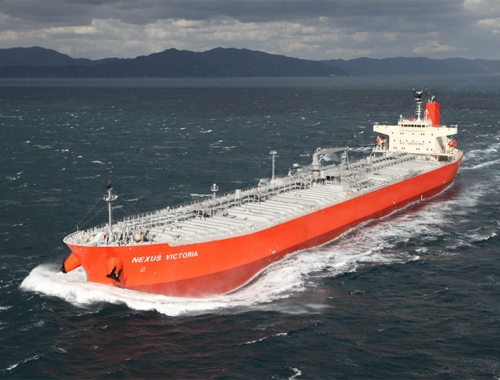China hones focus on CCUS
SUMMARY
Gas Pathways attended the 7th International CCUS Forum in Beijing in March, where speakers discussed the progress and potential of CCUS development in China.
By Shi WeijunPOSTED IN:
BP’s new agreement to develop a carbon capture, utilisation and storage (CCUS) cluster in southern China with the country’s largest oil and gas producer underlines how state-owned energy giants are driving momentum in China for deploying the nascent decarbonisation technology.
BP and PetroChina’s China Southern Petroleum Exploration and Development will focus on CCUS-based low-carbon projects on the island province of Hainan, according to a memorandum of understanding (MoU) signed by BP China president Simon Yang and China Southern Petroleum executive director Mai Xin earlier this month.
The MoU, signed on the sidelines of the 7th International CCUS Forum in Beijing, will see the two companies capitalise on BP’s expertise in developing the pioneering Net Zero Teesside Power project, which could be the UK’s first gas-fired power station to be fully integrated with CCUS technology.
Net Zero Teesside Power’s proposed combined cycle gas turbine will have output of up to 860 MW of low-carbon electricity. From the power plant alone, the proposed carbon transport and storage infrastructure will capture and store up to 2mn metric tons/yr of CO2 emissions.
China’s energy sector accounts for 70% of China’s carbon emissions but the world’s energy fossil fuel consumer will need decades to wean itself off coal, oil and gas, so CCUS will be essential for the sector’s long-term decarbonisation.
NOC-IOC cooperation
In a video message accompanying the BP-PetroChina MoU’s signing ceremony, BP CEO Bernard Looney said the MoU was part of the major’s strategic partnership with PetroChina’s parent, CNPC, that was signed in 2015 and recently extended to 2026. The partnership covers oil and gas production including in shale, fuel retailing ventures in China, trading, and the companies’ joint participation in the Oil & Gas Climate Initiative (OGCI).
“CCUS will play a critical role in the energy transition especially in heavy industries like power, steel and cement. These are industries that need a lot of heat and that heat depends a lot on hydrocarbons. Reducing emissions from hydrocarbons is going to depend a lot on CCUS,” Looney said.
“The world increasingly needs lower-carbon energy, but it also needs energy that is secure and… affordable. It needs all three at the same time, and that is a complex challenge. We need many different fuels including oil and gas. We also need many different companies and many different technologies. Carbon capture is one of them and I would say a crucial one. Right now we are seeing real momentum behind CCUS,” Looney said.
The MoU is the latest team-up between Chinese NOCs and IOCs in the CCUS sector. In February state-owned CNOOC, Shell, ExxonMobil and the government of southern China’s Guangdong province signed an agreement to jointly research a “world-scale” CCUS hub to serve petrochemical complexes in the Daya Bay Industrial Park.
The project has a 10mn mt/yr potential and could serve as a model for other large petrochemical complexes to remove CO2 emissions, ExxonMobil’s Asia-Pacific president for low-carbon solutions Irtiza Sayyed said at the Beijing forum. A successful development could help China with its ‘dual carbon’ goals to peak CO2 emissions before 2030 and then zero them out before 2060, Sayyed added.
China Southern Petroleum focuses on exploration and production in Hainan, producing 6,000 barrels per day at the province’s Fushan Oilfield. It was one of the earliest oilfield operators in China to carry out CCUS pilot tests and has constructed a full-flow CCUS system at Fushan, with 180,000 mt of CO2 sequestered to date at a cost of 50mn yen ($21.9mn). The subsidiary has reportedly worked out plans to build CCUS projects in Hainan with a capacity of 1mn mt/yr of CO2, rising to 10mn mt/yr in the future.
More efforts needed
Agreements like the BP-PetroChina MoU will be welcomed in China, where CCUS deployment has arguably lagged behind pacesetters the US, Canada and Norway. A multi-disciplinary engineering effort is needed in China to accelerate the use of CCUS on an industrial and economical scale, as the country has yet to the create conditions necessary to support the substantial investment in large-scale CCUS – particularly as a solution to industrial decarbonisation – according to PetroChina chairman Dai Houliang.
Problems in China’s fledgling CCUS sector range from regional disparities in technical expertise to the technology’s uncertain commercial prospects and high costs, Dai said at the forum. He called for a focus on developing technology to sequester low concentrations of CO2 at low cost, boosting research and development of technologies that have geological, chemical and biological applications for CO2, and the construction of an industrial system for utilising captured CO2 on a large scale.
An additional focus should be building 3-5mn mt/yr demonstration projects that span the entire CCUS value chain, while steadily promoting the construction of 10mn mt/yr clusters, according to Dai.
“Scaling up is very important,” said Bjørn Otto Sverdrup, chair of OGCI’s executive committee. “What we see in some other countries is that an important milestone is when the country feels it is ready to shift focus from smaller-scale projects to, how could we finance and execute large industrial-scale projects. When that step is made, there’s a lot of momentum.”
Dai said CNPC plans to partner with foreign companies and research institutions to build CCS-CCUS projects in member states of the Belt and Road Initiative, a massive China-led infrastructure project that is the foreign policy brainchild of Chinese president Xi Jinping.
“To support the CCUS industry to further achieve high-quality development, we need to adopt a two-pronged approach involving government and market forces,” said Ding Zhongli, vice chairman of the Standing Committee of the 14th National People’s Congress and an academician of the Chinese Academy of Sciences.
“Firstly, we must clarify the strategic positioning of CCUS and promote its large-scale application demonstration. Secondly, we must accelerate CCUS industry alliances and innovation consortiums, strengthen international cooperation, and establish a sound technical standards system.”
“A new industry needs new regulations. In many countries a lack of clear and coordinated CCUS regulations remains one of the main barriers to CCUS deployment,” said Sverdrup.
China’s central government has moved to bulk up policymaking for CCUS. The 14th Five-Year Plan – released in March 2021 and governing China’s economic development up to 2025 – highlighted the role of CCUS in low-carbon development and called for supporting the “demonstration of major important projects such as CCUS”, marking the first time CCUS was mentioned in a national five-year plan.
State players dominate
The private sector has steered clear of CCUS in China in the absence of any regulatory framework, leaving the sector to be dominated by the country’s largest state-owned enterprises (SOEs). China has some 40 CCUS demonstration projects of different sizes in operation or under construction—spread across the petroleum, power generation, coal chemical, fertiliser and cement industries, and developed mostly by the likes of CNPC and Sinopec, power producer China Huaneng, conglomerate China Resources, and mining and energy giant China Energy Investment.
PetroChina’s parent CNPC, Sinopec and CNOOC have all launched projects over the past few years. In August 2021 Sinopec officially launched China’s first megaton-class integrated CCUS project at the Shengli Oilfield while CNOOC announced the country’s first offshore CO2 storage project at the Enping Oilfield offshore Guangdong.
This was followed by China Huaneng announcing the first megaton-scale CCUS development for a coal-fired power station, located in the central province of Gansu and expected to be completed by the end of this year.
CNPC has carried out 17 major CCUS pilot tests at 11 of its oil and gas field subsidiaries. Some 121 km of pipeline for transporting supercritical CO2 has been built at the Jilin Oilfield in China’s northeastern province of Jilin, while plans for a 2mn mt/yr pipeline from Daqing Petrochemical to the Aonan Oilfield are complete with construction to begin soon.
CNPC had injected a cumulative 5.63mn mt of CO2 for enhanced oil recovery (EOR) by the end of 2022, which boosted crude oil output by 300,000 mt/yr. Last year’s injection volume reached 1.11mn mt, which represented more than 70% of the national total.
China is expected to inject 30mn mt/yr of CO2 for EOR by the end of this decade, which will yield 10mn mt/yr of crude oil – equivalent to nearly 5% of last year’s national crude oil output. By mid-century China will be injecting 100mn mt/yr.
An evaluation of China’s offshore carbon sequestration potential released by the Ministry of Natural Resources in January indicated that up to 2.58 trillion mt of CO2 could be stored under the seabed, which would support the country’s efforts to peak emissions before 2030 and then zero them out by 2060.






